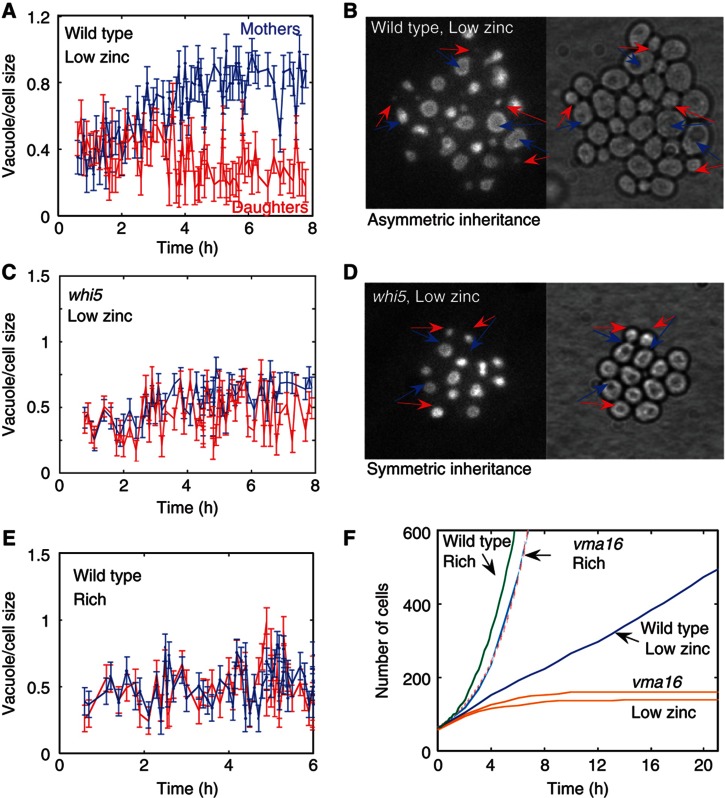Figure 4.
Correlation between vacuole size and capacity to divide. (A, B) Mothers maintained most of the vacuole in low zinc. Shown is the fraction of vacuole that mothers (blue) and daughters (red) receive upon division, as extracted from fluorescent images (B) of cells containing vacuolar marker (Vph1-GFP). The arrows indicate mother–daughter pairs just after division. Note that early divisions that occurred before the splitting (t<3 h) distribute the vacuole symmetrically between the mother and the daughter cells. In contrast, divisions that occurred at t>3 h lead to asymmetric distribution, where mothers maintained a larger portion of the vacuole. (C, D) Symmetric vacuole inheritance in whi5 cells in low zinc. Same as (A, B) for whi5 cells. (E) Symmetric vacuole inheritance in exponentially growing cells. Same as (A) for wild type in rich conditions. (F) Mutant with defective vacuole (vac17) does not divide in low zinc. Shown are growth curves of wild type in rich (green) and low-zinc conditions (blue), vma16 in rich (blue, with red dashed fitting curve) and low-zinc conditions (orange, two different experiments).

